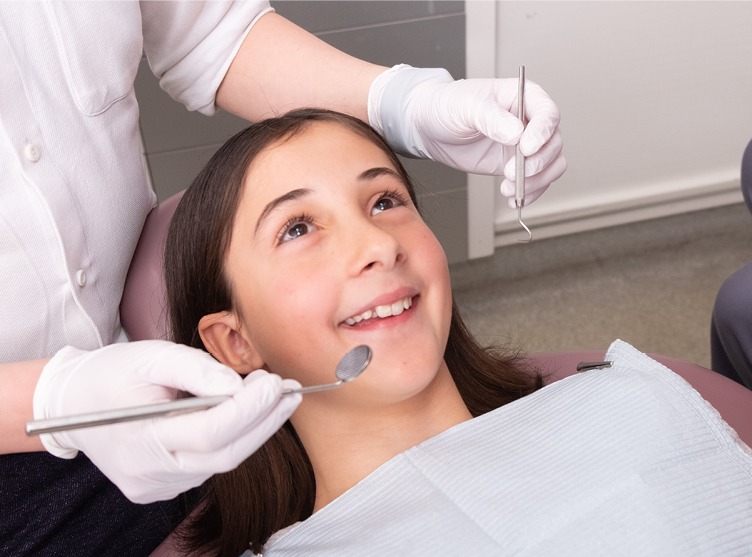Some Known Questions About Legacy Orthodontics.
Some Known Questions About Legacy Orthodontics.
Blog Article
Some Known Facts About Legacy Orthodontics.
Table of ContentsHow Legacy Orthodontics can Save You Time, Stress, and Money.Not known Facts About Legacy OrthodonticsLegacy Orthodontics Can Be Fun For EveryoneLegacy Orthodontics Things To Know Before You BuyThe Greatest Guide To Legacy Orthodontics
In addition, we provide flexible therapy timetables, adaptable settlement choices and a fun, pleasurable experience.An orthodontist is a dentist trained to identify, protect against, and deal with teeth and jaw irregularities. Orthodontists function with individuals of all ages, from kids to grownups.
Malocclusion, or misaligned teeth, can bring about oral concerns, including dental caries, periodontal illness, and tough or unpleasant chewing. Not every person is born with straight teeth. If you have a bad bite or huge rooms between your teeth, you may wish to seek advice from a dental professional concentrating on orthodontic care.
Things about Legacy Orthodontics
( Image Credit History: DigitalVision/Getty Images) Orthodontists use taken care of and detachable dental tools, like dental braces, retainers, and bands, to transform the placement of teeth in your mouth. Orthodontic treatment is for dental irregularities, including: Jagged teethBite troubles, like an overbite or an underbiteCrowded teeth or teeth that are also much apartJaw misalignmentThe objective of orthodontic therapy is to enhance your bite.
A healthy and balanced bite ensures you can eat, eat, and talk properly. While you could think about orthodontists as primarily for kids or young adults that require dental braces, they can correct oral problems at any type of age. Orthodontists attend university, oral college, and orthodontic college. After graduation, they invest 2 or 3 years in an orthodontic residency program.
, but not all dental practitioners are orthodontists. They concentrate on two areas: How to properly and safely move teeth How to correctly assist development in the teeth, jaw, and faceOnce an orthodontist has actually completed training, they have the choice to come to be board accredited.
The Only Guide for Legacy Orthodontics
Misalignment, or malocclusion, is the most usual factor individuals see an orthodontist. It is genetic and is the outcome of size differences in between the upper and reduced jaw or in between the jaw and teeth. Malocclusion causes tooth overcrowding, an askew jaw, or uneven bite patterns. Malocclusion is generally treated with: Your orthodontist attaches steel, ceramic, or plastic square bonds to your teeth.
If you have just minor malocclusion, you might have the ability to make use of clear dental braces, called aligners, instead of standard braces (https://calendly.com/brianmccune20176-proton/30min). Some people need a headgear to aid move teeth into line with pressure from outside the mouth. After dental braces or aligners, you'll need to wear a retainer. A retainer is a custom-made device that maintains your teeth in location.
They're frequently used on youngsters. They can develop additional room in the mouth without needing to pull teeth. If you have a serious underbite or overbite, you might need orthognathic surgery (additionally called orthodontic surgical treatment) to lengthen or reduce your jaw. Orthodontists use cables, surgical screws, or plates to sustain your jaw bone.
You might need to see an orthodontist if you have: Crowding or otherwise adequate room for every one of your teethOverbite, when your top teeth come by your bottom teethUnderbite, when your base teeth are as well much forwardSpacing or issues with gapsCrossbite, which is when your upper teeth fit behind your base teeth when your mouth is closedOpen bite or a vertical gap between your front base and upper teethMisplaced midline, when the facility of your bottom and upper teeth do not line up Fixing a dental malocclusion can: Make attacking, chewing, and speaking easierImprove the proportion of our face and your overall appearanceEase pain from temporomandibular joint problemsSeparate your teeth and make them less complicated to clean up, assisting stop dental cavity or cavities It's commonly a dental expert who first notices misaligned teeth during a routine examination.
The Only Guide to Legacy Orthodontics

During your first orthodontic appointment, you'll likely have: A dental examPhotos taken of your face and smileDental X-raysPanoramic (360 degree) X-rays of your face and headImpressions to develop molds of your teethThese tests will assist your orthodontist know exactly how to wage your therapy. braces. An orthodontist is a dental professional that's had training to treat your teeth and jaw
An orthodontist is focused on your bite, so something like a cracked tooth would certainly be handled by a dental professional. Orthodontists are focused on your bite, or the means your teeth fit together, and the straightness of your teeth.
Ever asked yourself how stars constantly seem to have flawlessly straightened teeth? The response often depends on the knowledgeable hands of an orthodontist. But just what does an orthodontist do? Orthodontists are dental specialists who focus on fixing irregularities in the teeth and jaws. Their proficiency goes past simply creating a lovely smile; it reaches improving your general dental health and feature.
An Unbiased View of Legacy Orthodontics

While braces are the most frequently identified orthodontic therapy, orthodontists have a varied toolkit at their disposal. The certain method chosen depends on the extent of the instance, the individual's age, and private choices. These reliable dental braces use a system of brackets adhered to the teeth and connected by cords.
Clear aligners, like Invisalign, are a prominent alternative for individuals seeking a much more very discreet therapy choice. These detachable trays are Read More Here custom-made to gradually shift the teeth's setting. Headgear may be utilized combined with braces or aligners to apply additional targeted pressures, especially for dealing with jaw discrepancies. In cases of narrow jaws, palatal expanders can be utilized to develop space for appropriate tooth positioning.
Report this page